

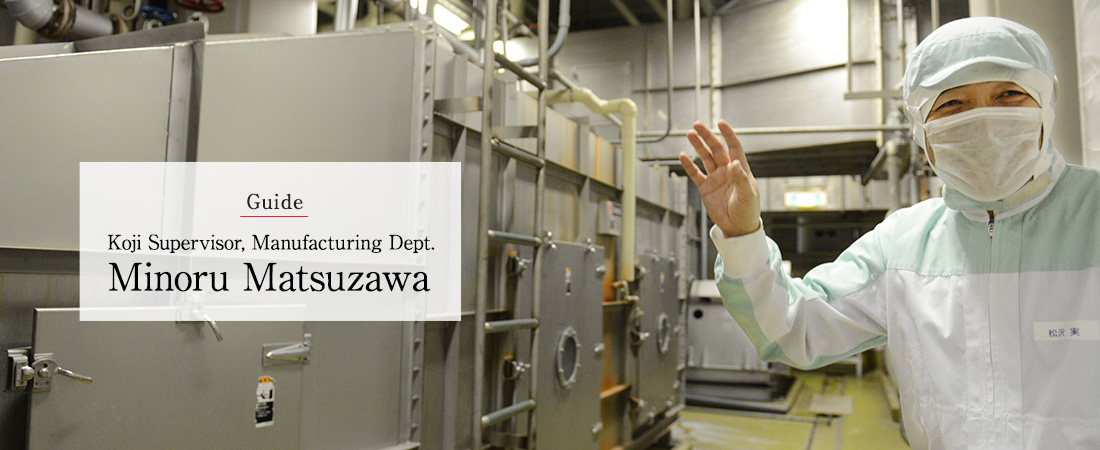
Rice that has been milled and sorted at the rice milling plant is delivered to the factory, where it undergoes strict checks.
Each delivered lot is inspected for discolored rice, miscellaneous grains, and foreign matter.
Radioactivity inspection: Safety of the rice is confirmed.
Magnet: Metal pieces, etc., are removed.
Air current separator: Dust and light foreign matters are blown away.
Metal detector: Non-ferrous metals such as copper and aluminum are removed here.
Rice polisher: Rice bran and fine foreign substances adhering to the surface of the rice are removed.
Magnet: A magnet is used again to remove any remaining metal fragments, etc.
Color sorting machine: Highly accurate sensors instantly judge foreign matters that are a different color from the rice, such as discolored rice and stones.
Up to 120 tons of rice (six large trucks worth) are delivered each day. Each single grain of rice is inspected.
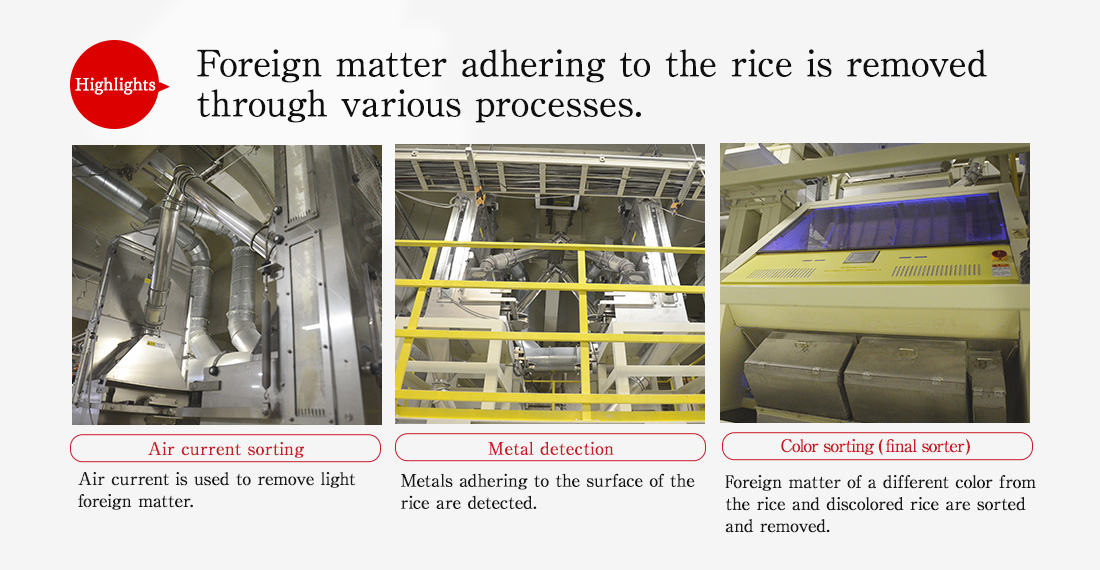

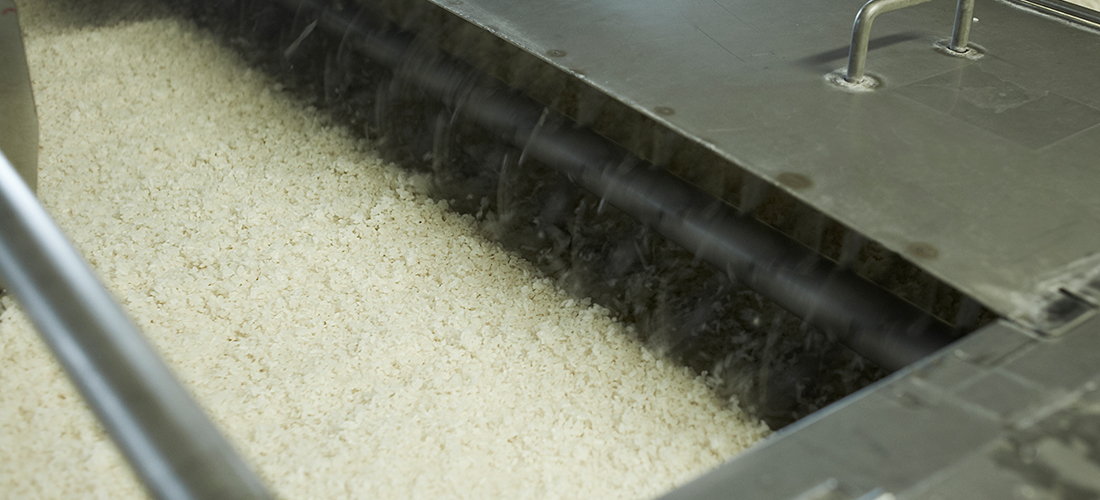
Rice that has successfully passed the Sorting Process is placed in a huge 13-ton tank, and soaked in water. The speed at which the rice absorbs water varies according to the type of rice and the outside temperature, so each batch is adjusted and controlled individually. Rice which has absorbed water after soaking for several hours is drained and then sent to the steaming process. This is an important point in the Koji and Miso Making Process.
Ideally, steamed rice should have a hard exterior and soft interior. In this state, an environment where the koji mold can grow bacterial threads is created. On the other hand, if the steamed rice has a hard core, it can cause coarsening or dullness in the finished miso. A combination of electronic operations in the central control room and manual operations performed by workers at the factory floor results in a highly perfected steamed rice.
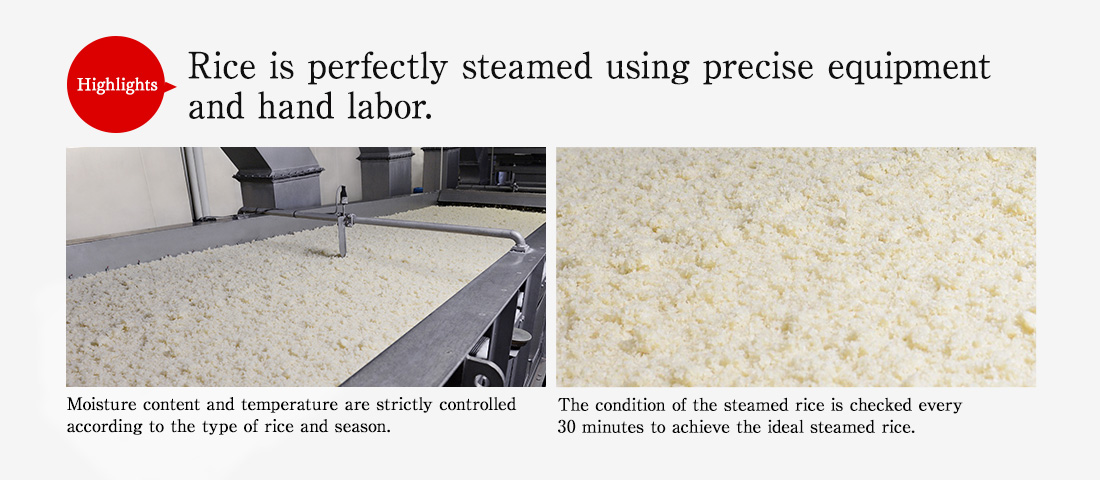

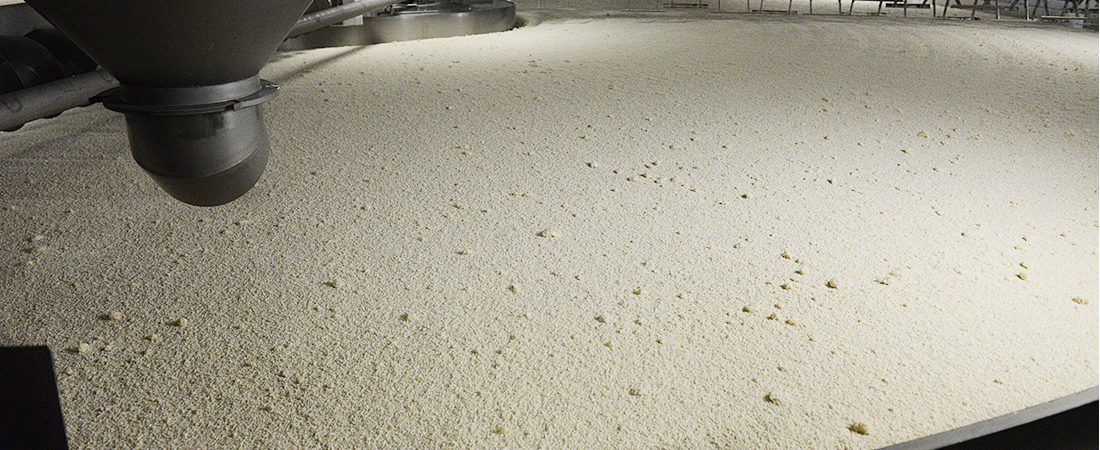
After steamed rice is cooled to the right temperature to grow koji mold, it goes through a process called tane-tsuke where the koji mold is introduced to the rice. The mixture is then quickly spread out across the koji-making equipment. With a diameter of 16-meter and a 35-ton capacity, it looks like something out of a science fiction movie. The rice remains here for about 40 hours and transforms into koji, which contains approx. 30 different kinds of enzymes.
This process is also carried out with the joint effort of electronic and manual operations. The condition of the koji is constantly checked by the central control room as workers take samples every few hours, checking the aroma and flavor. The workers have years of experience which they use to maintain stable quality.
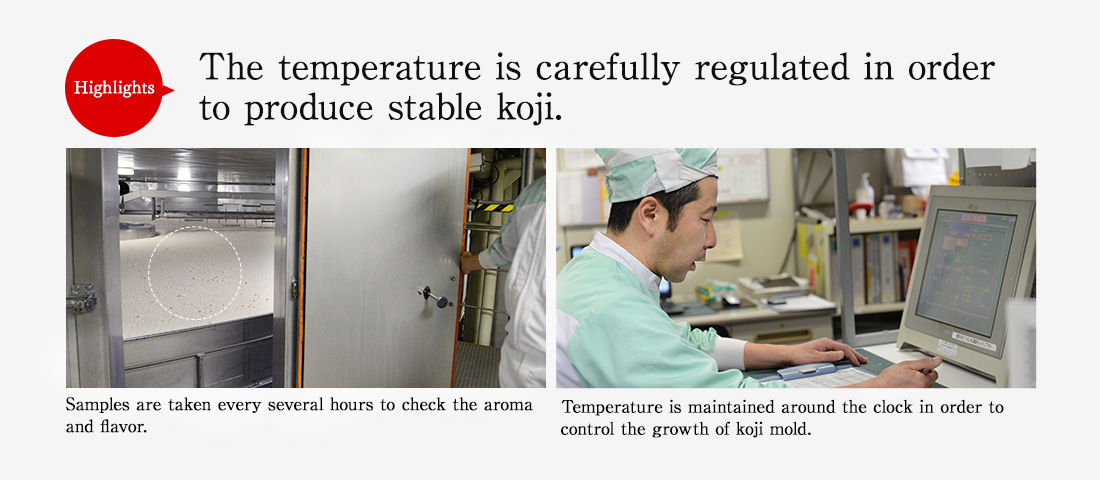

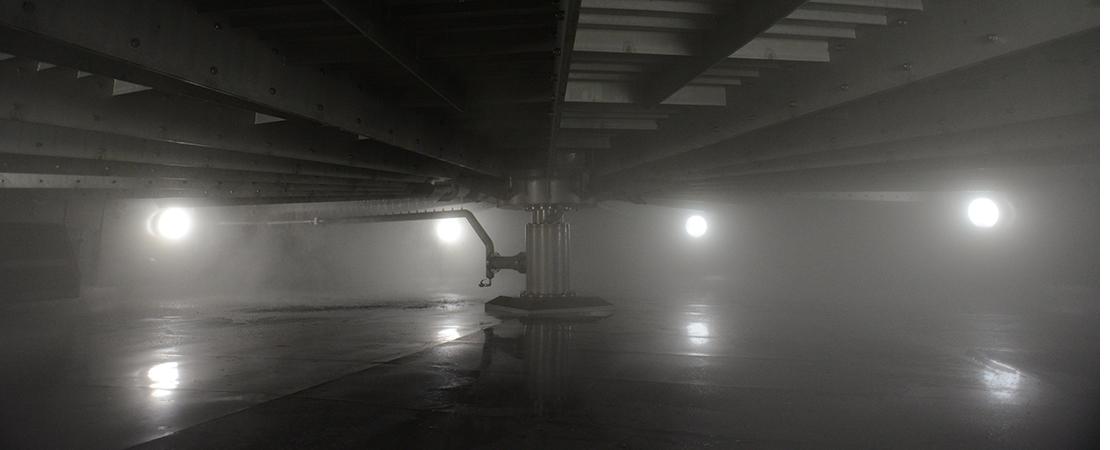
We spare no effort in maintaining a clean factory environment. Once a week, we stop all preparation work, and take time to clean.
"We wash the steam rice production line every day. We make a product that is consumed by our customers, so cleaning is an important job that we cannot overlook." (Matsuzawa)
Tools required to make koji including a belt conveyor line, manufacturing related equipment, and tanks used to transport, are all cleaned and reset. Seeing the shiny equipment at the end of the day feels good.
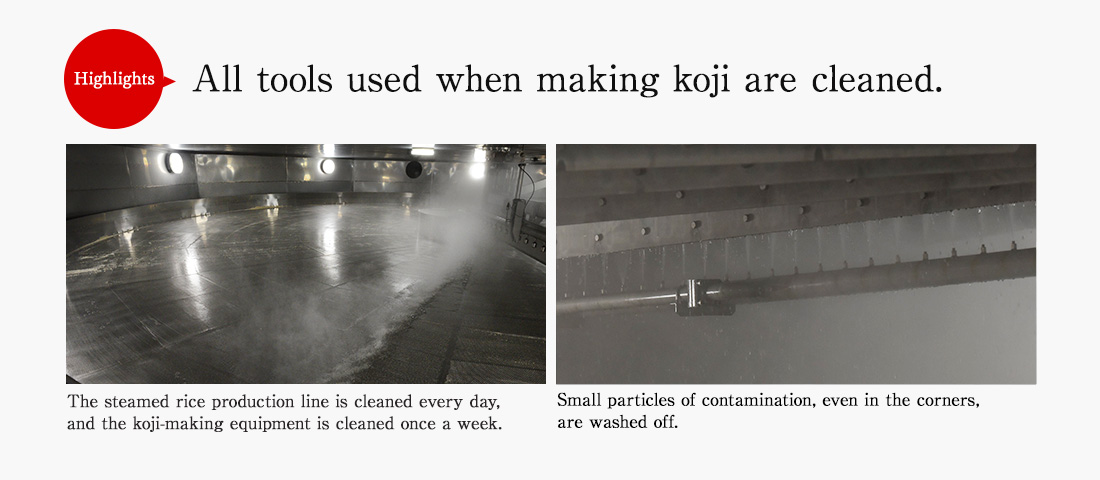

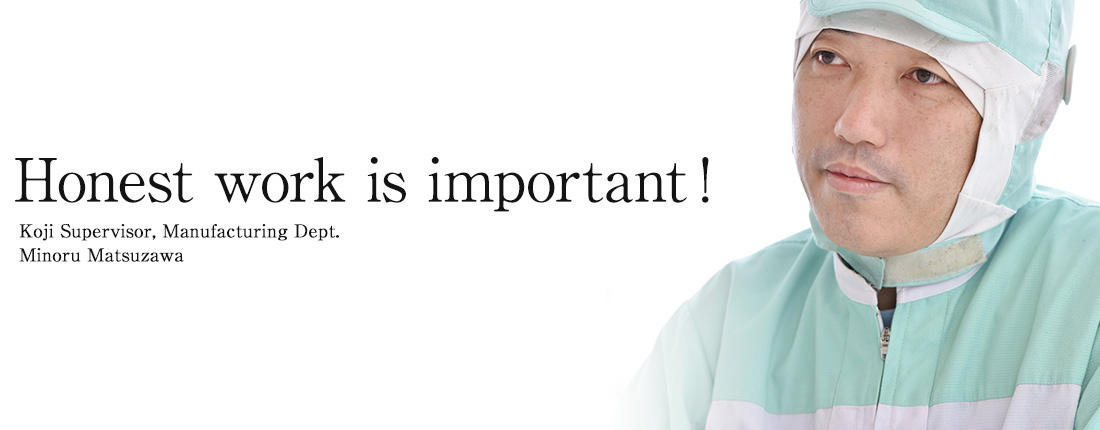
It is important to work honestly. We cannot cut corners, or skip a step. I think that if carry things out honestly, the results will naturally follow. It's also important to think not just as a manufacturer, but also as a customer.
Sentiments only from the manufacturer’s side, such as “This is how hard we worked to make it”, are not enough. Under these circumstances, the never-ending challenge is to make products without mistakes. When training workers the job, we use manuals. That's why I always try to give an explanation on “why we perform the work.” It’s important to remember that we are creating what the customer demands. I think understanding that reason motivates us to perform better work.